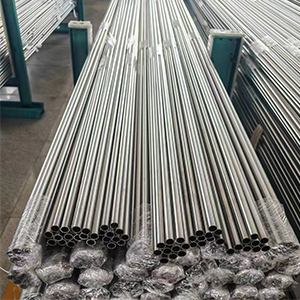Environmental issues to be noted in the production of stainless steel bright pipes
The environmental issue of producing stainless steel bright pipes is to control the source of pollution from every link, not to discharge waste gas, wastewater, and waste residue indiscriminately, and to minimize energy waste as much as possible. It is actually very clear to trace the production process.
Firstly, in the initial smelting process, stainless steel smelting produces a lot of smoke and dust, as well as harmful gases such as sulfur dioxide and nitrogen oxides. If they float directly into the air, it will definitely not work. Therefore, efficient dust removal equipment such as bag filters must be installed above the furnace to capture most of the metal dust, and the collected dust can be reused without waste; As for harmful gases, they need to be treated by specialized desulfurization and denitrification devices, neutralized with alkaline solution to remove acidic components, and discharged after the gas meets the standards to avoid polluting the atmosphere. During smelting, slag will be generated, which cannot be piled up on the ground casually. It must be collected by classification, and the recyclable stainless steel components inside must be extracted and reused. If it cannot be recycled, it should be handed over to companies with hazardous waste disposal qualifications to prevent heavy metals from seeping into the soil or groundwater.
Next, in the rolling process, lubricating oil is used to reduce friction and protect the rollers. This oil is prone to evaporate and produce oil fumes, as well as waste oil and sludge. A ventilation and smoke exhaust system must be installed in the workshop to remove and filter the oil fumes before discharging, reducing the impact on the workshop air and employee health; Waste oil and sludge should not be directly poured into the sewer. They should be collected in sealed containers and either sent to professional institutions for regeneration treatment to become usable lubricating oil, or disposed of as hazardous waste in compliance with regulations to avoid oil pollution of soil and water sources. In addition, the rolling equipment produces a lot of noise during operation, which should also be considered as environmental protection. For example, adding soundproof covers to the rolling mill and pasting soundproof materials on the workshop walls can reduce the impact of noise on the outside world, especially in the factory area near residential areas, which should be paid more attention to.
Next is the key pickling process, where stainless steel bright pipes rely on pickling to remove surface oxide scales, using strong acids such as nitric acid and hydrofluoric acid, which are the most prone to environmental issues. Firstly, the acid mist cannot leak out. The acid pickling tank needs to be equipped with a sealed lid, and then connected to the acid mist absorption tower. The alkali solution is circulated and sprayed to neutralize the acid mist. This way, there will be no pungent acidity or air pollution in the workshop; More importantly, the pickling waste liquid contains a large amount of heavy metal ions (such as chromium and nickel) and residual acid, which must not be directly discharged. A specialized wastewater treatment plant needs to be built. First, alkali is added to neutralize the acidity of the waste liquid, and then chemical agents are added to precipitate heavy metal ions. The filtered water must also be tested to meet the standards before it can be discharged. If conditions permit, the treated water can be reused in the cleaning process to save water resources; The heavy metal sludge that settles belongs to hazardous waste and must be handed over to qualified units for disposal. It cannot be buried privately.
Next up is the polishing process, which generates a large amount of stainless steel dust and debris from the polishing paste. If these dust particles float in the air, they not only pollute the environment but can also be inhaled by employees, affecting their health. So the polishing machine needs to be equipped with a dust collection system, such as a combination of cyclone dust collector and bag dust collector, to suck in and filter the dust. The collected metal dust can also be remelted in the furnace, which is both environmentally friendly and saves raw materials; The coolant used during polishing should also be recycled, with impurities regularly filtered out to extend its service life. Finally, the scrapped waste coolant should also be treated as hazardous waste in compliance with regulations and cannot be discharged randomly.
Finally, there are some details that cannot be overlooked, such as optimizing energy use as much as possible throughout the entire production process, using clean energy sources such as natural gas and electricity to replace high polluting fuels, and maximizing energy utilization in the smelting and heating processes to reduce carbon emissions; All kinds of solid waste in the workshop, such as packaging materials and waste parts, should be classified and recycled. Those that can be reused should be utilized, while those that cannot be reused should be disposed of according to the standard for ordinary solid waste; The wastewater generated during the cleaning process, which may contain residual acid and polishing agents, should also be collected and treated together at the wastewater treatment station, and cannot be directly discharged.
In short, every link should focus on the points of “exhaust gas, wastewater, waste residue, noise, and energy consumption”, and try to achieve “less discharge, recycling, and reuse”, which not only meets environmental protection requirements but also reduces waste in production.



